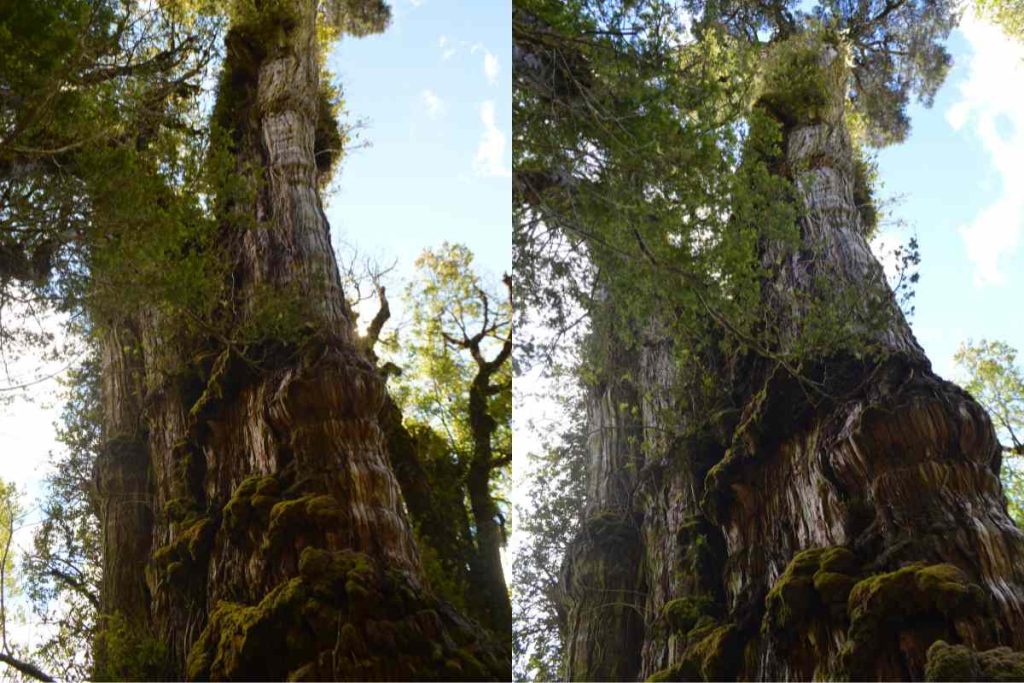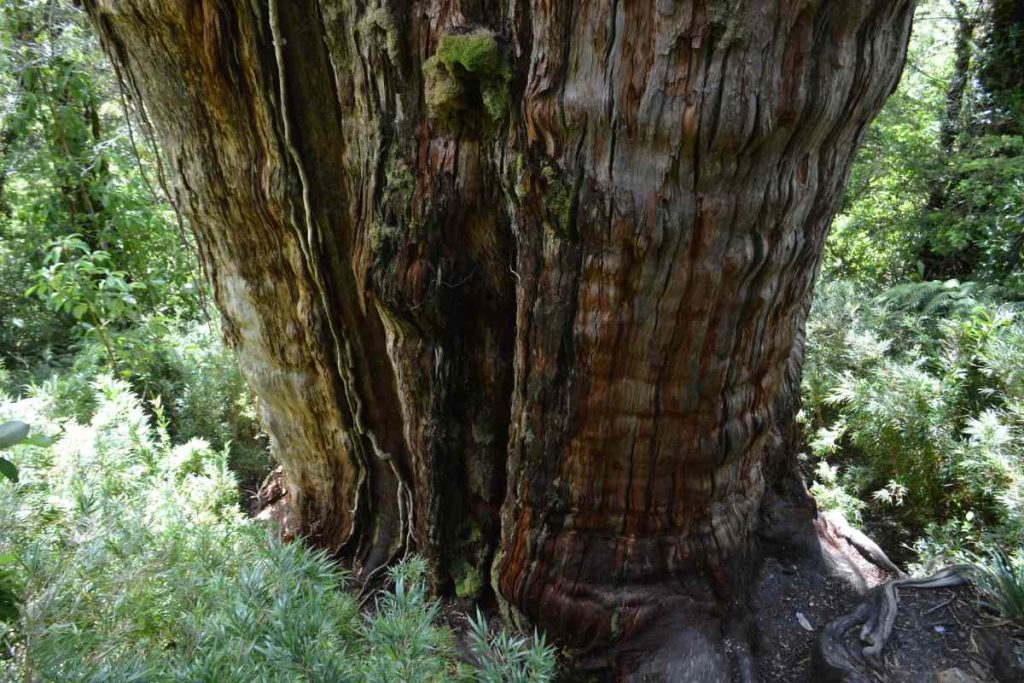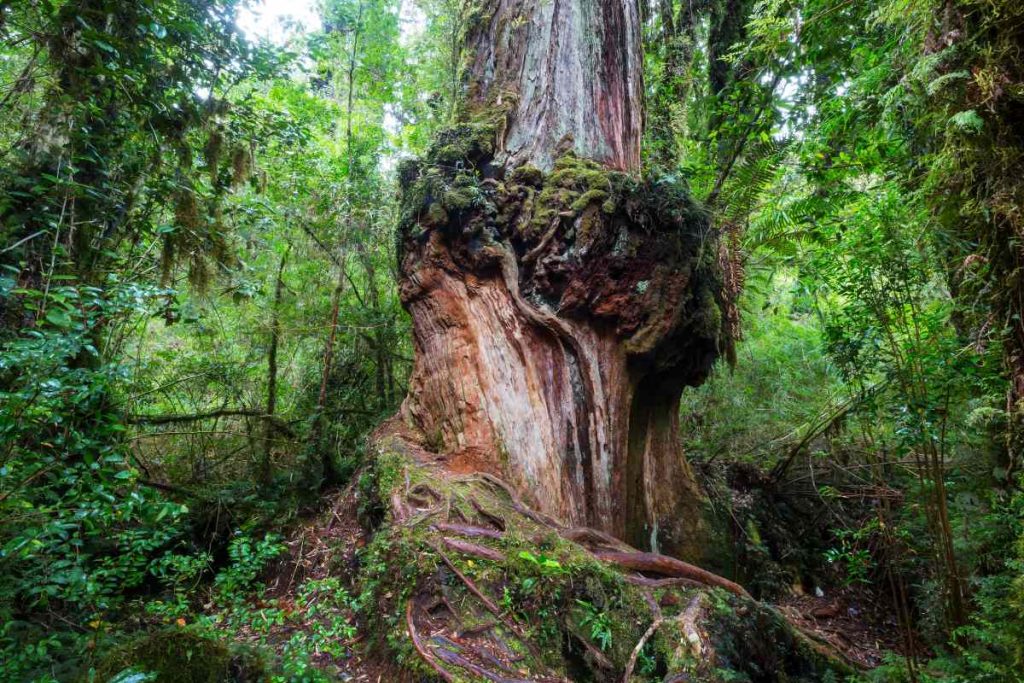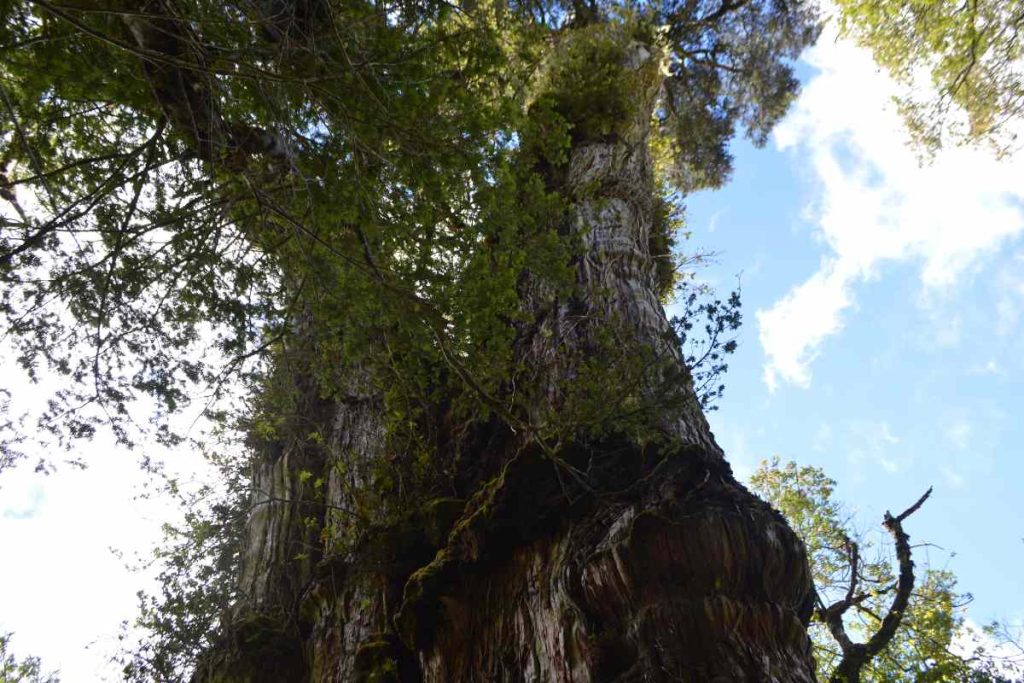The ancient Alerce tree, also known as Fitzroya Cupressoides, is a remarkable species that holds great significance in various aspects of human history and the natural world. This majestic tree has captured the attention and admiration of people for centuries due to its impressive size, longevity, and cultural importance.
In this article, we will explore the historical significance, physical characteristics, habitat and distribution, cultural importance, role in the ecosystem, threats to its survival, conservation efforts, and the future of the Alerce tree.
Table of Contents
The Alerce Tree’s Historical Significance
The Alerce tree has played a significant role in indigenous cultures throughout history. Indigenous communities in Chile and Argentina have revered the Alerce tree for its spiritual and medicinal properties.
It was considered a sacred tree and was used in various rituals and ceremonies. The wood of the Alerce tree was also highly valued for its durability and resistance to decay, making it ideal for constructing houses, canoes, and other essential items.
During colonial times, the Alerce tree became a valuable resource for European settlers. Its wood was highly sought after for shipbuilding and construction purposes. The Alerce tree’s timber was known for its strength and resistance to rot, making it ideal for building structures that could withstand harsh weather conditions. Unfortunately, this led to extensive logging of the Alerce tree, resulting in a significant decline in its population.
In modern times, the Alerce tree has gained recognition for its ecological importance and cultural significance. Efforts have been made to protect and preserve the remaining Alerce tree forests, recognizing their value as a living testament to our natural heritage.
The Alerce Tree’s Physical Characteristics

The Alerce tree is an impressive species in terms of its height and size. It can reach heights of up to 200 feet (60 meters) and have a diameter of 10 to 15 feet (3 to 4.5 meters). Some Alerce trees are estimated to be over 3,000 years old, making them some of the oldest living organisms on Earth.
The bark of the Alerce tree is reddish-brown and has a fibrous texture. It is thick and can provide protection against fire and other external threats. The wood of the Alerce tree is highly prized for its durability and resistance to decay. It has a reddish-brown color and a fine grain, making it ideal for furniture, flooring, and other high-quality wood products.
The leaves of the Alerce tree are scale-like and arranged in opposite pairs along the branches. They are dark green in color and have a distinctive aroma when crushed. The cones of the Alerce tree are small and round, measuring about 0.5 to 1 inch (1.3 to 2.5 centimeters) in diameter. They contain seeds that are dispersed by the wind.
The Alerce Tree’s Habitat and Distribution
The Alerce tree is native to the temperate rainforests of southern Chile and Argentina. It can be found in the Andes Mountains, where it thrives in cool, moist environments. The Alerce tree prefers well-drained soils and is often found growing near rivers and lakes.
The Alerce tree’s preferred habitat is characterized by high rainfall and low temperatures. It can tolerate freezing temperatures and is adapted to withstand strong winds and heavy snowfall. The Alerce tree is often found growing in mixed forests alongside other coniferous species such as the Coigue tree and the Cypress tree.
The Alerce Tree’s Cultural Importance

The Alerce tree holds great cultural importance in the regions where it is found. It has been depicted in art and literature as a symbol of strength, longevity, and resilience. The Alerce tree has inspired many artists and writers, who have captured its beauty and significance in their works.
In indigenous cultures, the Alerce tree is considered a sacred tree and is associated with spiritual and medicinal properties. It is believed to have healing powers and is used in traditional medicine to treat various ailments. The Alerce tree is also used in rituals and ceremonies to connect with the spiritual world and seek guidance from ancestors.
The Alerce Tree’s Role in the Ecosystem
The Alerce tree plays a crucial role in the ecosystem, providing habitat and food for a variety of species. Its large size and longevity make it an important source of shelter for birds, mammals, and insects. The Alerce tree’s branches and foliage provide nesting sites for birds, while its bark and hollow trunks offer refuge for small mammals.
The Alerce tree also contributes to carbon sequestration, helping to mitigate climate change. Its massive size allows it to store large amounts of carbon dioxide, reducing the concentration of greenhouse gases in the atmosphere. The Alerce tree’s long lifespan ensures that the carbon it stores remains locked away for centuries.
Threats to the Alerce Tree’s Survival
The Alerce tree faces several threats to its survival, primarily due to human activities and environmental changes. Logging and deforestation have been the most significant factors contributing to the decline of the Alerce tree population. The demand for its valuable timber has led to extensive logging, resulting in the destruction of large areas of Alerce tree forests.
Climate change is another major threat to the Alerce tree’s survival. Rising temperatures, changing rainfall patterns, and increased frequency of extreme weather events can negatively impact the Alerce tree’s ability to survive and reproduce. Droughts and heat waves can cause stress and mortality in Alerce trees, while increased rainfall can lead to flooding and soil erosion.
Disease and pests also pose a threat to the Alerce tree. In recent years, outbreaks of fungal diseases have affected Alerce tree populations, causing dieback and mortality. Invasive species, such as the European woodwasp, can also damage the Alerce tree by feeding on its bark and wood.
Conservation Efforts for the Alerce Tree

Efforts are being made to protect and conserve the Alerce tree and its habitat. Several protected areas and reserves have been established to safeguard the remaining Alerce tree forests. These areas provide legal protection against logging and other destructive activities.
Reforestation and restoration projects are also underway to restore degraded Alerce tree forests and increase their population. These projects involve planting young Alerce trees in areas where they have been lost or damaged. Reforestation efforts are often carried out in collaboration with local communities, which play a crucial role in the long-term success of these initiatives.
Education and awareness campaigns are essential for promoting the conservation of the Alerce tree. By raising awareness about its ecological importance and cultural significance, these campaigns aim to inspire people to take action and support conservation efforts. Education programs in schools and communities can help foster a sense of stewardship and responsibility towards the Alerce tree and its habitat.
The Future of the Alerce Tree
The future of the Alerce tree remains uncertain, as it continues to face threats from human activities and environmental changes. The demand for its valuable timber and the pressures of climate change pose significant challenges to its survival. However, there is hope for the preservation and protection of the Alerce tree.
Continued efforts to raise awareness, implement conservation measures, and promote sustainable practices can help ensure the survival of the Alerce tree. By valuing its ecological importance and cultural significance, we can work towards a future where the Alerce tree thrives and continues to inspire generations to come.
The Importance of Preserving the Ancient Alerce Tree
In conclusion, the ancient Alerce tree holds immense significance in terms of its historical, cultural, and ecological importance. It has played a vital role in indigenous cultures, colonial times, and modern society. The Alerce tree’s physical characteristics, habitat, and distribution make it a unique and remarkable species.
However, the Alerce tree faces numerous threats to its survival, including logging, climate change, and disease. Conservation efforts are crucial for protecting and preserving the Alerce tree and its habitat. By establishing protected areas, implementing reforestation projects, and raising awareness, we can ensure that future generations have the opportunity to admire and appreciate the ancient Alerce tree. It is our responsibility to take action and support conservation efforts to safeguard this extraordinary species for years to come.
More Sources: Uncovering the Secrets of the World’s Oldest Olive Tree
